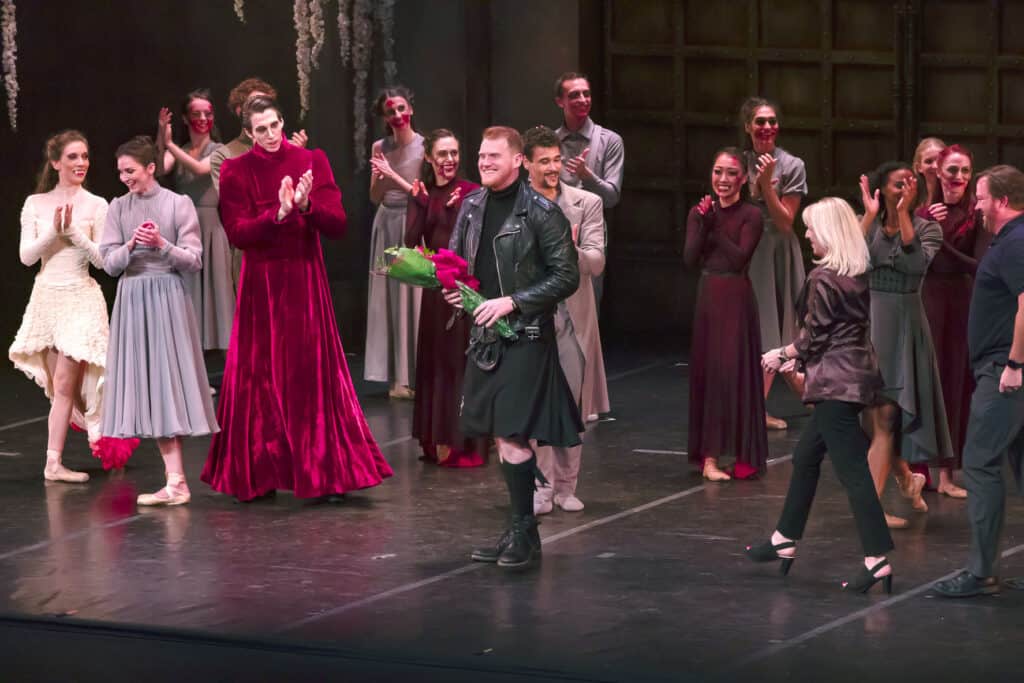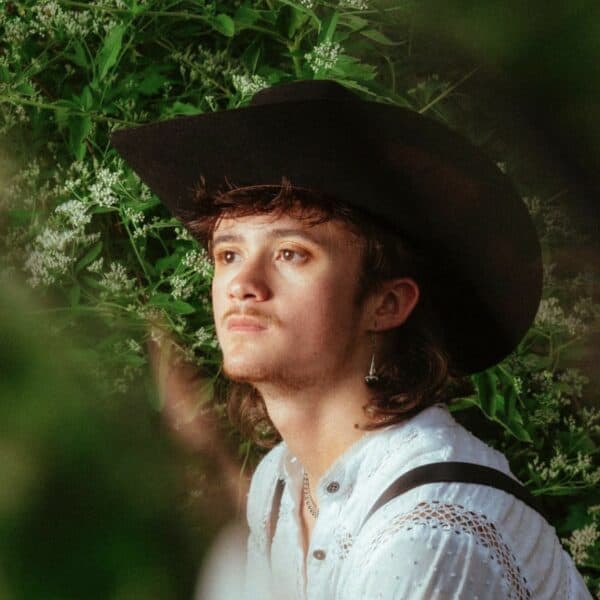What brought you to the position of Artistic Director at Ballet Memphis?
I’ve been at Ballet Memphis since 2004. I’m originally from Glasgow, Scotland and I came to the United States in 2001. I finished my dance training at the Ailey School in New York. I was there for three years. It was difficult and I was learning lots of different types of dance. When I graduated, they were really good to me. They were sending me to any audition I could go to, but it was clear that I was probably going to end up in a ballet company or a company like Ballet Memphis that had a mixture of classical and contemporary work, which I was really interested in.
Have you always been a dancer?
I’ve always thought of myself as creative. I’m not sure that’s the right word though. I’ve always wanted to make stuff. And my mom would spend whatever money she had on things like art supplies and Legos anything that would allow me to make. Within 30 minutes, I would always put it away because I was never satisfied. I was judging what I was making because I’m actually not very good with my hands. I went to a community theater group; I must have been about 10 years old at this point. I thought I was going to become an actor. When I was at the community theater group, the Scottish Ballet came to do a workshop with the kids. When I saw them perform, I was like, “Oh, there’s some language in here that I don’t know how to speak, but I relate to it.” I very quickly became obsessed and devoted. The guy who ran the group said I looked like I had a natural aptitude for dance and asked if I would consider auditioning for the Dance School of Scotland, the only vocational high school for dance in Scotland. So I went.
Do you dance much now?
I do mostly the creating and designing aspects. I retired from the stage in 2016. It’s a complicated thing because the body cannot handle dancing forever. I worked mine pretty hard. When it’s not your job to move your body every day, it’s very hard to hold onto that discipline. Like a lot of other creative people that work in creative industries, they have to find discipline for their craft. Our dancers are hugely disciplined, but they have to be. It’s their job. For dancers, their craft and career are the same and that doesn’t exist for a lot of creatives. We all want artists to be paid the way we should for our creativity, but it’s their job to live out their craft. I like being in the studio and working with dancers, but I also like the time that I have for planning future shows. So it’s trying to find the balance. I think a lot of things that we do in our day-to-day are creative acts. Like deciding what you’re going to wear. It’s an attempt to create something else, something a little different than you were before you did that.
Because at the end of day it’s all about making, right? And being around makers– people that are kind of tuned into that same mindset. People that need to create for their personal well being.
I am a creative, but my hands-on is a different kind of hands-on. The way that I shape my creativity is through other people’s bodies. Dance is very natural. You’ve been gesturing and moving your body before you could say anything, so I think there is an innate desire to move, whether we know it or not. Everyone expresses through movement; choreographers just take it to an extreme and stylize it. It’s really beautiful.

What is your choreography influenced by?
Making choreography is different for everybody, right? Like depending on the style of dance or technique you’re using. And for me, yes, it’s based in ballet, but I studied a lot of different types of dance. It doesn’t feel like I’m using the fullness of what I know if I don’t add other things to it. Like with Dracula in particular, I took a lot of creative choreographic risks. I changed the style of the movement to suit the scene so it expresses itself fully. It’s quite unusual to steer away from something that could be very much a serial production. And I love doing this under a ballet organization, because people have an expectation of what they are going to see. Those who know classic dance show up and think “this isn’t ballet.” But it really is. There are basic principles and there are things that are non-negotiable. But isn’t it more interesting for us to shape it depending on whatever else we are inspired by?
It’s a response to how you process your personal experiences of what you understand as dance. Now that you’ve spoken that into the world with Dracula and other shows, it influences other dancers and choreographers. They respond to you and everything else they’ve absorbed. It’s just this big web of communication, even though it’s not always spoken.
It’s all communication. It’s all in the decisions I make. Like I said, I’m working with bodies. Sometimes what someone needs from one hour to the next is very different. They can be tired and anxious and that affects what you’re able to do. So part of my job is navigating those natural ebbs and flows of, not just their physical abilities, but their state of being. Like knowing when to push, when to pull back, when to encourage and lift. Because we don’t exist without each other. It’s so gratifying to watch the dancers learn stuff about themselves. To learn about their own power, their own control, and their own imagination. And then there are huge thrills when things feel great and devastating lows when it’s not. I don’t think that’s unique to dancers. But what a wonderful thing to be able to say you get to do that for a living, right? And to have the resources of an organization to support that.
Can you explain your creative process when writing the choreography for Dracula?
When I am telling a narrative, I have to think the source material is strong. Dracula was one of the first gothic novels, and it was written at a very scary time for those Victorians because the new century was to come and technology was shifting. They were kind of freaking out. They were afraid of outsiders. It’s quite dry, but the core of what it is about is flexible. It was pretty experimental for its time. Dracula didn’t have a linear story. I had to kind of design my own narrative and take some liberties with it, which I don’t love doing because these stories are already masterpieces. Who am I coming in trying to mess that up? But with a story that is as complicated as Dracula, it needed clarity. It needed a map. Once I figure out what that map is I know what needs to be said. It’s this big thing that then becomes smaller and smaller. If I know what their motivation is, then I love trying to figure out how that would look in a body. I love the process of trying to uncover what is alive in people. What would my natural response look like? How do I abstract it even further? That is what I love– digging into this abstract form of dance and then bringing humanity out in it. That for me is my creative process: understanding what I’m trying to say, finding the sound that can guide it, and then finding the movements that embody that. Artistry that makes it believable. And it’s fun.
Learn more about Steven and Ballet Memphis on their website balletmemphis.org. The company’s performance of Winter Mix: Love Songs/ Love Stories runs February 24-26th, 2023 at Playhouse on the Square.




